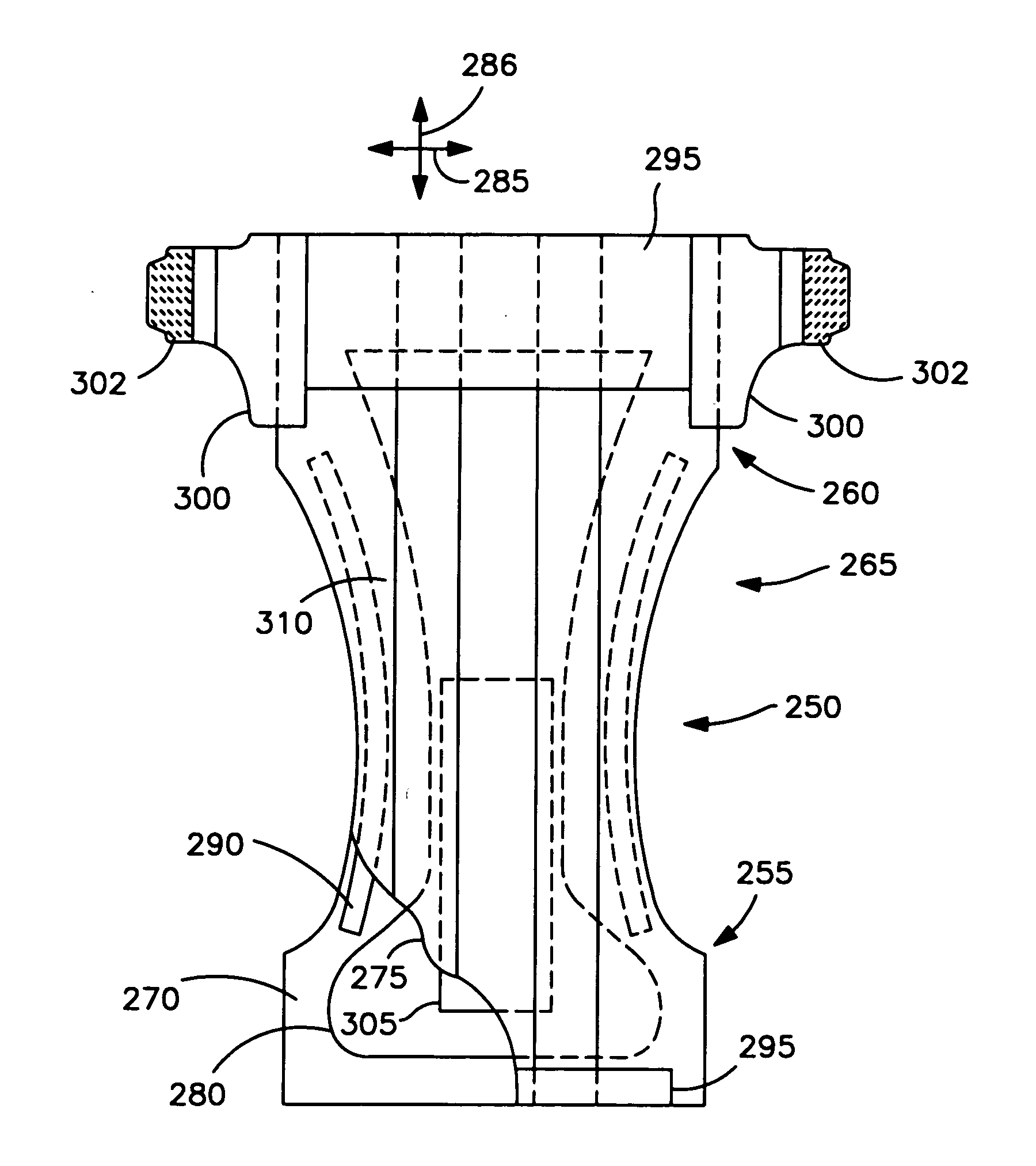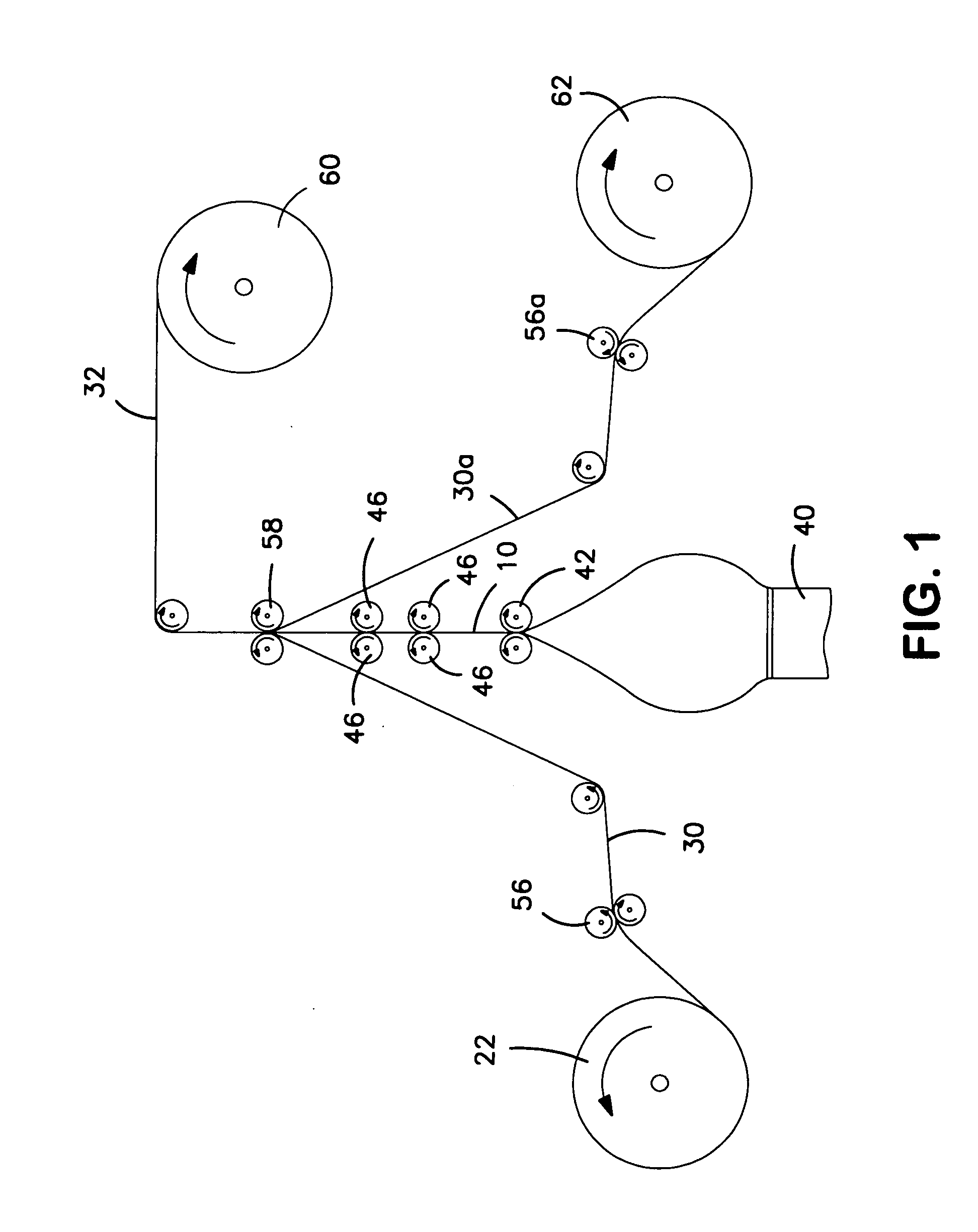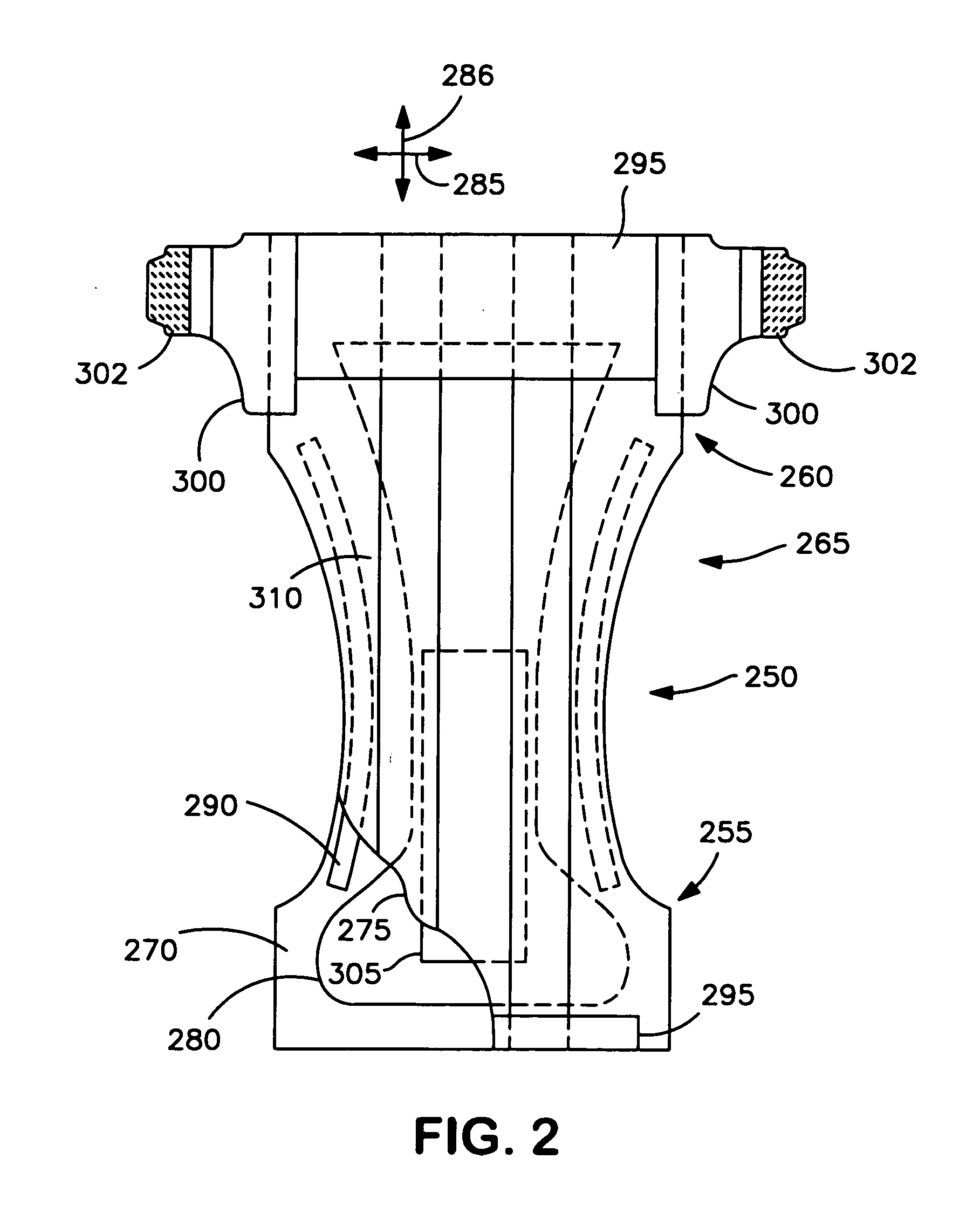Nonwoven-film composite with latent elasticity
a technology of nonwoven film and latent elasticity, which is applied in the direction of weaving, paper/cardboard containers, bandages, etc., can solve the problems of difficulty in properly measuring and positioning the desired quantity of elastic articles in the final product, and achieve the effect of increasing the stretchability of the composi
- Summary
- Abstract
- Description
- Claims
- Application Information
AI Technical Summary
Benefits of technology
Problems solved by technology
Method used
Image
Examples
example 1
[0088]A film was formed having a multi-layered “skin-core” structure. The core comprised 94 wt. % of the film and the skin layer comprised 6 wt. % of the film. The core was formed from 75% percent of KRATON® MD6694 (Kraton Polymers, LLC of Houston Tex.) and 25% of EXACT™ 5361 (ExxonMobil Chemical Co.). The skin layer was formed from 50% VISTAMAXX™ 1100 (ExxonMobil Chemical Co.) and a filler compound (Standridge Color Corp.), which contained calcium carbonate blended with polypropylene and polypropylene random copolymers. As is known in the art, the skin layer was used to facilitate bonding but was believed to have little or no effect on the elastic or heat shrinkage properties of the composite. The polymers were compounded by weighing appropriate portions of pellets of each polymer, combining them into one container, and mixing them together by stirring.
[0089]After compounding, the sample was extruded using a small scale triple screw blown film line with a 1.75-inch extruder (Killio...
example 2
[0091]A film was formed having a multi-layered “skin-core” structure. The core comprised 94 wt. % of the film and the skin layer comprised 6 wt. % of the film. The core was formed from 75% percent of KRATON® MD6673 (Kraton Polymers, LLC of Houston Tex.) and 25% of EXACT™ 5361 (ExxonMobil Chemical Co.). The skin layer was formed from 50% VISTAMAXX™ 1100 (ExxonMobil Chemical Co.) and a filler compound (Standridge Color Corp.), which contained calcium carbonate blended with polypropylene and polypropylene random copolymers. As is known in the art, the skin layer was used to facilitate bonding but was believed to have little or no effect on the elastic or heat shrinkage properties of the composite. The polymers were compounded by weighing appropriate portions of pellets of each polymer, combining them into one container, and mixing them together by stirring.
[0092]After compounding, the sample was extruded using a small scale triple screw blown film line with a 1.75-inch extruder (Killio...
example 3
[0094]The materials of Examples 1 and 2 were heat activated in hot water at 160° F. for 30 seconds, and also “cycle” tested and “stretch-to-stop” tested. The results are set forth below in Tables 1-3.
TABLE 1Process ConditionsCoreSkinExtruderExtruderNip #1Nip #2BonderWinderSpeedSpeedSpeedStretchSpeedSpeedSpeedSample(RPM)(RPM)(ft / min)Ratio(ft / min)Relaxation %(ft / min)(ft / min)13727233683047472372722367304747
TABLE 2Shrinkage and Cycle ResultsCycle 1Cycle 2LoadLoadLoadLoadLoadLoadBHRLAHRLupupdownupupdownSample(mm)(mm)% Shrinkage50%100%50%Hyst. %50%100%50%Set %18453371334207881834.21083201481813.428352371307183580134.61058181379713.2
TABLE 3Stretch to Stop Results% Stretch to Stop% Stretch to StopSample(Before Heat Shrinkage)(After Heat Shrinkage)13997239109
[0095]As indicated, each of the blend combinations provided good elastic behavior after heat activation as exhibited by their hysteresis and set as obtained through cycle testing. Additionally, both samples exhibited good latency behavio...
PUM
| Property | Measurement | Unit |
|---|---|---|
| density | aaaaa | aaaaa |
| heat shrinkage | aaaaa | aaaaa |
| heat shrinkage | aaaaa | aaaaa |
Abstract
Description
Claims
Application Information
 Login to View More
Login to View More - R&D
- Intellectual Property
- Life Sciences
- Materials
- Tech Scout
- Unparalleled Data Quality
- Higher Quality Content
- 60% Fewer Hallucinations
Browse by: Latest US Patents, China's latest patents, Technical Efficacy Thesaurus, Application Domain, Technology Topic, Popular Technical Reports.
© 2025 PatSnap. All rights reserved.Legal|Privacy policy|Modern Slavery Act Transparency Statement|Sitemap|About US| Contact US: help@patsnap.com



